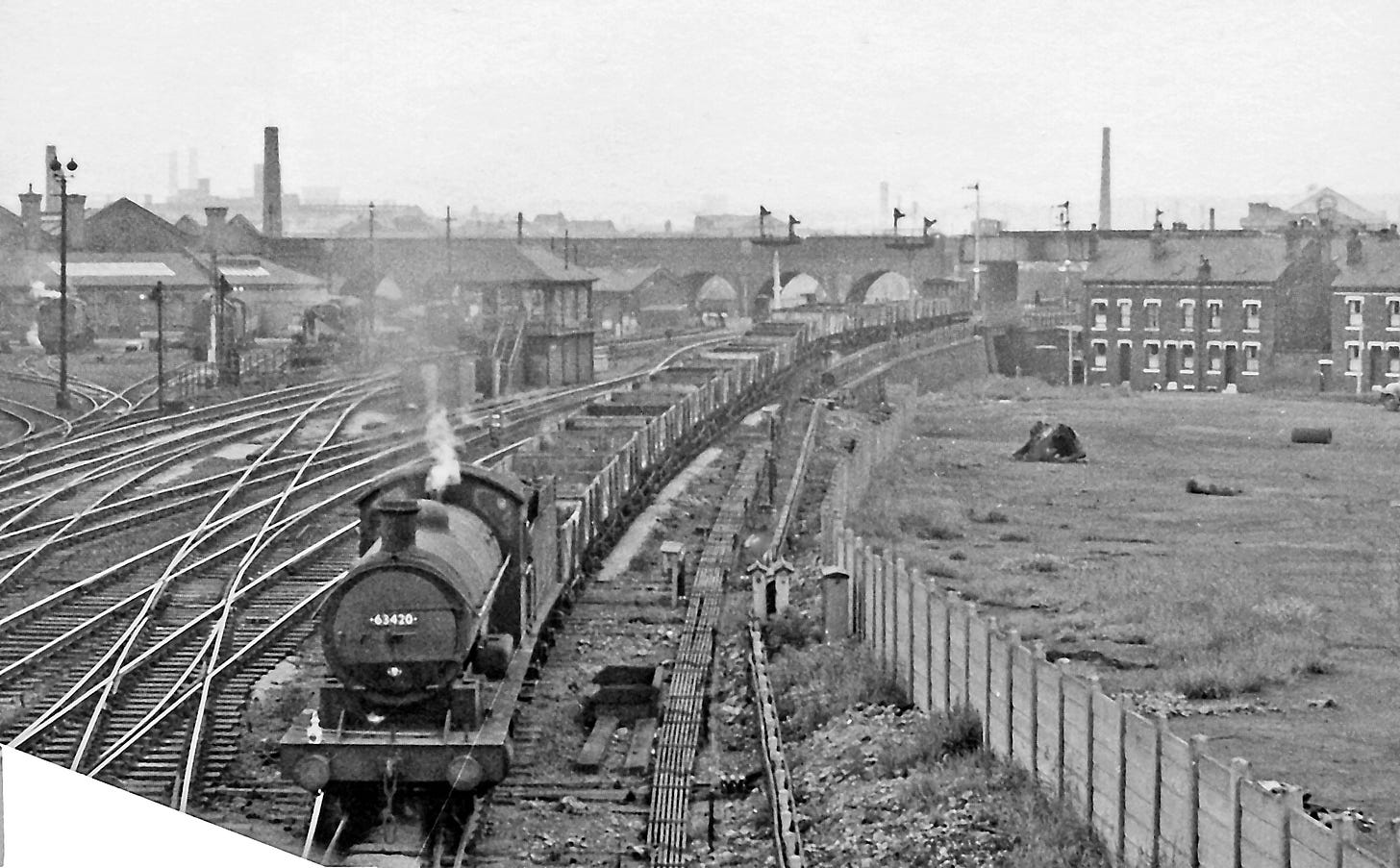In June 1915, Leeds was a city of factories, foundries, mills, yards and warehouses.
A Yorkshire Evening Post reporter arrived in the morning by train and described the “sordid scene” with the industrial buildings around Holbeck revealing “the hideous fact that one is entering a world of work”.
It sounds like a particularly bad case of the Mondays.
But trains are a wonderful thing. They transport you to a destination but can also stoke your imagination in ways that take you to places you really need to be, as this reporter found out.
When he was coming into Leeds Station and looking out of the train window he spotted something bewitching and really quite special:
“It was in one of those dismal moments that I caught my first glimpse of the purple patch. There, against a dreary background of boilers that had retired from business, was an old garden with iris running riot.”
Haughty-looking flowers
It’s a melancholy scene set against machinery, a pastoral nirvana in a world obscured by the darkness of war.
He continued:
“There were tall, haughty-looking flowers flourishing in profusion and flaunting their loviness in close proximity to burnt-out boilers and sinks that had sunk as low as a sink can sink.”
The reporter was coy to mention the exact location.
You suspect he did not want to spoil the secret, or perhaps was a little uncertain that his eyes weren’t deceiving him.
He rubbed his eyes and the irises vanished. Was this down to the movement of the train or had they been a mirage?
He was jolted into reality by the chap sat opposite who shouted at him: “Good old Leeds, here we are!”
Yearning for the purple patch
The reporter couldn’t get the purple patch out of his mind and said he “yearned for an old garden where iris ruled and swayed. I could seek solace there.”
He now dearly wanted to find the garden.
He’d spotted a sign on the train that served as a landmark, but locating the flowers was proving difficult on foot.
Everyone he asked in Holbeck doubted their existence. It was iron, not iris, around these parts after all.
The reporter began to fear that the purple patch was “nothing more than a chimaera.”
But then he pushed open a gate and, to his delight, found the irises in all their startling glory.
The garden had been hidden away from pedestrians, but it offered a tantalising glimpse for rail travellers where it could “gladden their tired eyes”.
Children were playing in the garden and a woman called Mrs Johnson, wife of a railway clerk, came out to speak to the reporter.
She said the flowers had been there for 20 years or more. However, Mr Johnson was entirely uninterested in gardening, so they grew unattended.
She had tried and failed to grow cabbages on an adjacent plot. There was something determined about these irises, to be sure.
The reporter said: "And still the iris bloom there midst the smoke and soot of the passing trains - a purple patch in a spot where even a cabbage hasn't the heart to grow."
Lessons
The metaphorical lesson of this article from 1915 was really strong for me.
When everything around you seems dark and dismal, look out for the purple patch. It’s usually there.
I was on the train into Leeds on Saturday and when we approached past Holbeck I had a little peek out of the window for those irises. I’ll keep looking.
Thanks for reading Bury the Leeds! Subscribe for free to receive new articles direct to your email inbox every other Monday!
Sources:
Britishnewspaperarchive.co.uk
The Yorkshire Evening Post, June 16, 1915.







I think it might be here...
https://maps.nls.uk/geo/explore/#zoom=17.7&lat=53.79184&lon=-1.55725&layers=117746211&b=ESRIWorld&o=98&marker=53.791478,-1.557205
The 1911 census shows a William and Annie Johnson living at Holbeck Lodge, William was a railway clerk for the Midland Railway
I've just moved to Leeds, and it's wonderful to read such colourful snippets of the city's history!